
As Norwegians become more secular, their interest in the Bible grows. What’s the connection?
A Norwegian theologian has discovered something odd.
The Church of Norway is in the process of disappearing from people's consciousness.
The Church, which is an evangelical Lutheran denomination, rarely appears in the media. A hundred years ago, Norwegian newspapers wrote much more about the Church than they do today.
This may not sound surprising.
What's more surprising is that in recent years, Norwegian newspapers have been referencing the Bible more and more.
Great interest in the Bible
“Look at this graph!”
Theology researcher Terje Stordalen shows us the graph of how often Norwegian newspapers wrote the words 'Church' and 'Bible' in the years between 1880 and 2022, a period of almost 150 years.
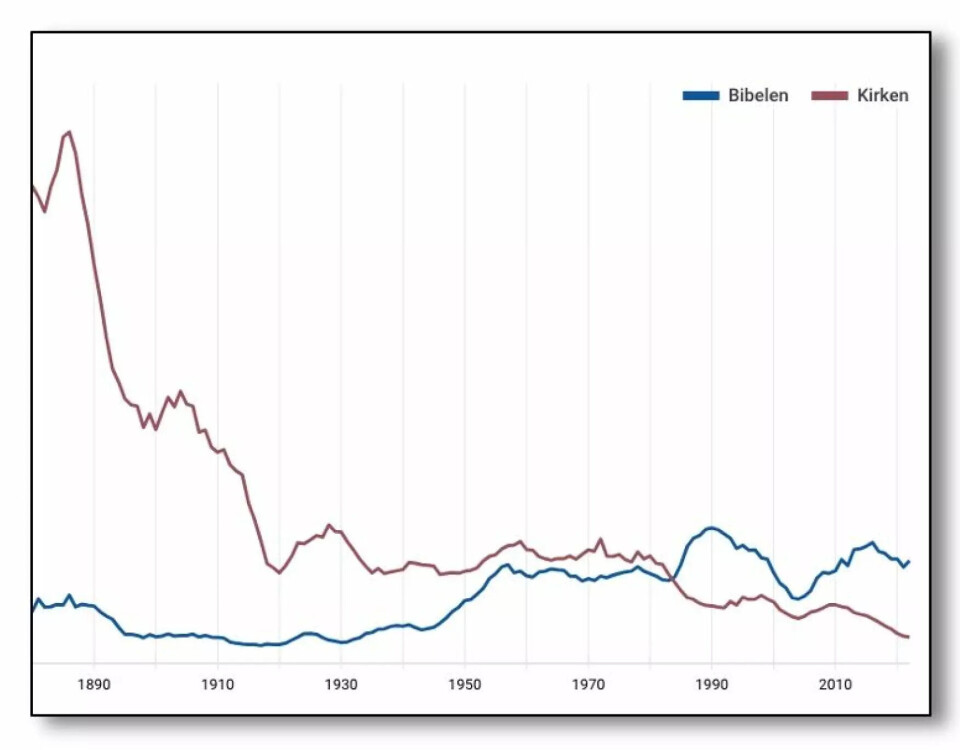
Research recently became possible
The secularisation of Norway has happened at fairly steady pace over the last one hundred years. Religious institutions and traditions have lost their power and significance.
But this does not mean that Norwegians have lost interest in Christianity's holy book. On the contrary, Stordalen has found.
“The media's interest in the Bible reached its lowest point around 1920. At that time, Norwegian newspapers hardly mentioned the Bible. The peak was reached in the 1990s. But the Bible is still frequently referenced in Norwegian newspaper articles,” he says.
Research like this has only recently become possible. This is because the National Library of Norway has digitised and made all newspapers and books published in Norway as far back as 1814 searchable.
Stordalen presented his study when he was appointed honorary doctor of theology at Lund University in Sweden. The research has not yet been published in an academic journal.
The Bible as a cultural phenomenon
Terje Stordalen has worked as both a journalist and a priest before becoming a theology researcher at the University of Oslo.
He has some theories about what has happened.
Stordalen found something interesting when he searched for the words ‘Bible’ and ‘culture/the culture’ at the same time:
- Interest in culture has clearly increased strongly in Norway.
- The use of the words ‘Bible’ and 'culture' seem to follow each other in the media.
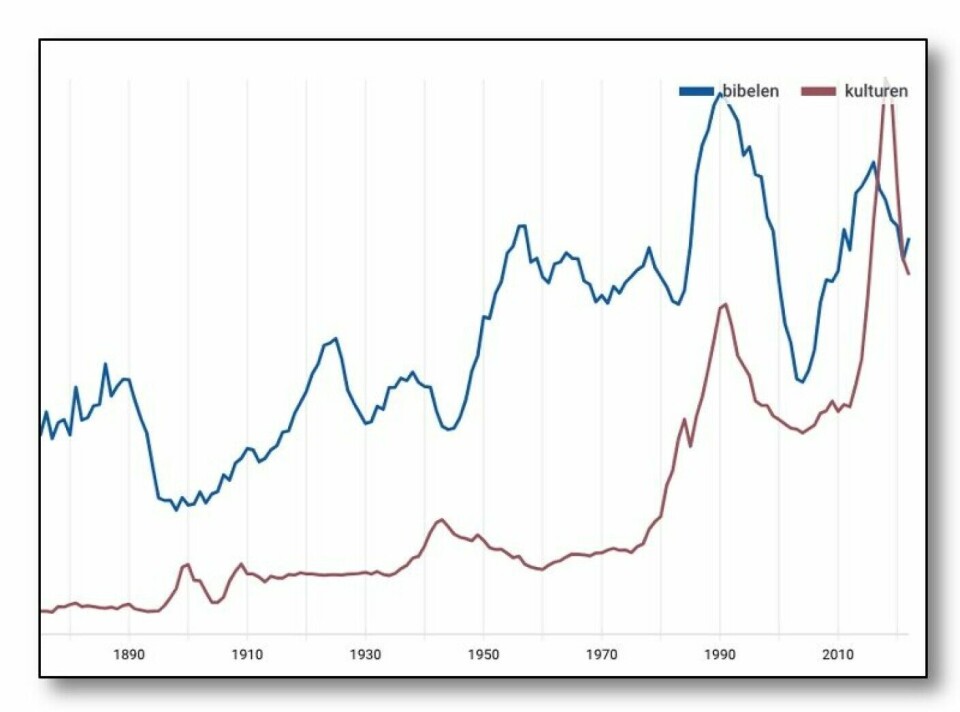
“One theory is that the increased interest in the Bible is linked to the book as a cultural phenomenon. That texts and stories from the Bible are alive in our culture,” he says.
Famous Bible stories reproduced in newspapers
Stordalen has also delved into more detail.
He has looked for well-known stories from the Bible that have been reproduced in Norwegian newspapers.
- The story of Cain and Abel (the first brother-against-brother conflict) was frequently written about around 1900 and again in the 1960s.
- The biblical text describing the Tower of Babel (Babel confusion / when people began to speak different languages) peaked in coverage in the 1950s. This coincided with the peak for the dispute over Norway’s two written versions of Norwegian, Nynorsk and Bokmål.
- Joseph and his brothers (jealousy, betrayal, and forgiveness) were frequently mentioned in newspapers in the 1970s. But Joseph and his brothers have now been absent from the media for two decades.
- In contrast, Noah's Ark (God's punishment for mankind's evil. God's grace and salvation) has received much attention in newspapers since the 1970s.
- Adam and Eve have also been prominently featured, both before and after the 1990s.
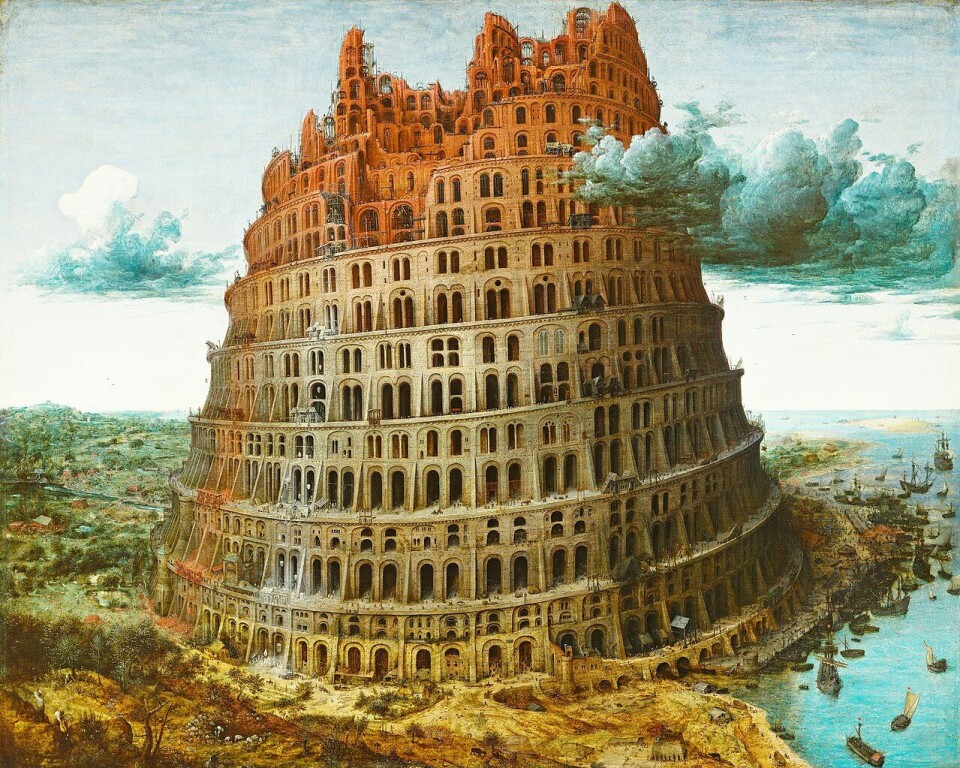
The Bible is on our minds
Stordalen believes that concepts such as ‘David against Goliath,’ ‘Babel confusion,’ ‘Paradise,’ and ‘God’ may now have become more a part of Norway’s cultural heritage than religion.
The biblical words and expressions have simply entered the language and thought patterns of Norwegian journalists – and much of the population as well.
Most viewed
Something else Stordalen has noticed is that all the stories above are taken from the Old Testament.
He says that there was remarkably little interest in the Old Testament in Norway a hundred years ago. Back then, it was mainly the stories about Jesus in the New Testament that both the Church and most people were interested in.
Hollywood and novels
When the Bible is brought up time after time, it is above all because of the stories it contains, Stordalen says.
“The film industry often relies on stories from the Bible and biblical themes. So do writers who write novels or plays,” he says.
Stordalen believes this is because the Bible has become such a central part of our culture.
The Church of Norway has lost a lot of influence and space in the public consciousness.
“But the Bible lives on, independent of the Church,” he says.
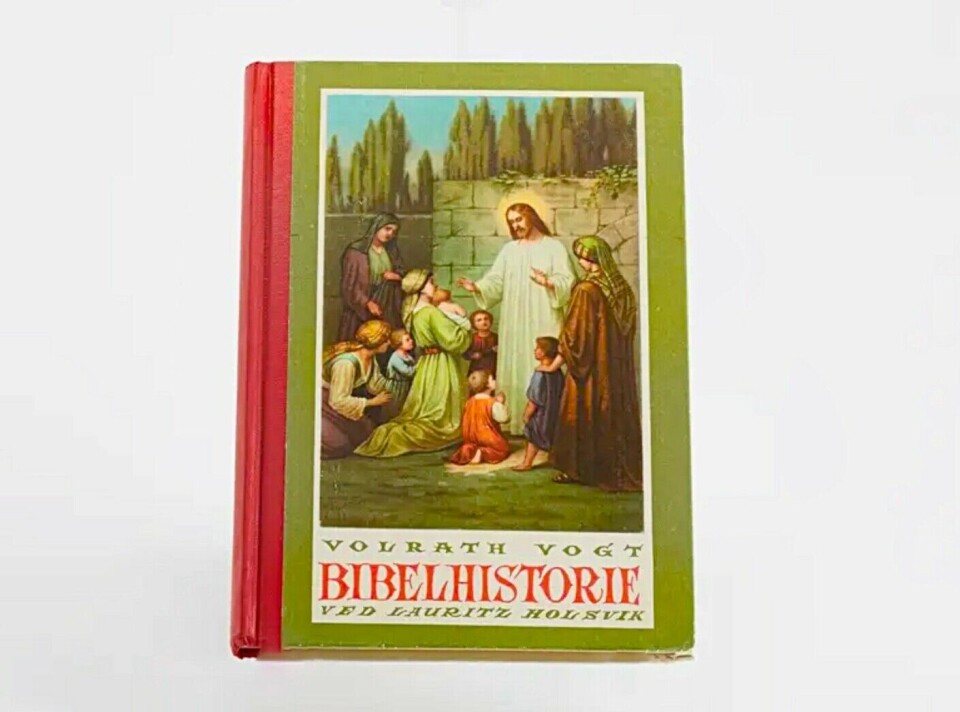
Health and family are also important
Stordalen, a former journalist and now researcher at the Faculty of Theology in Oslo, has also searched the National Library of Norway's database for other trends in Norwegian newspapers up to the present day.
Here's what he found:
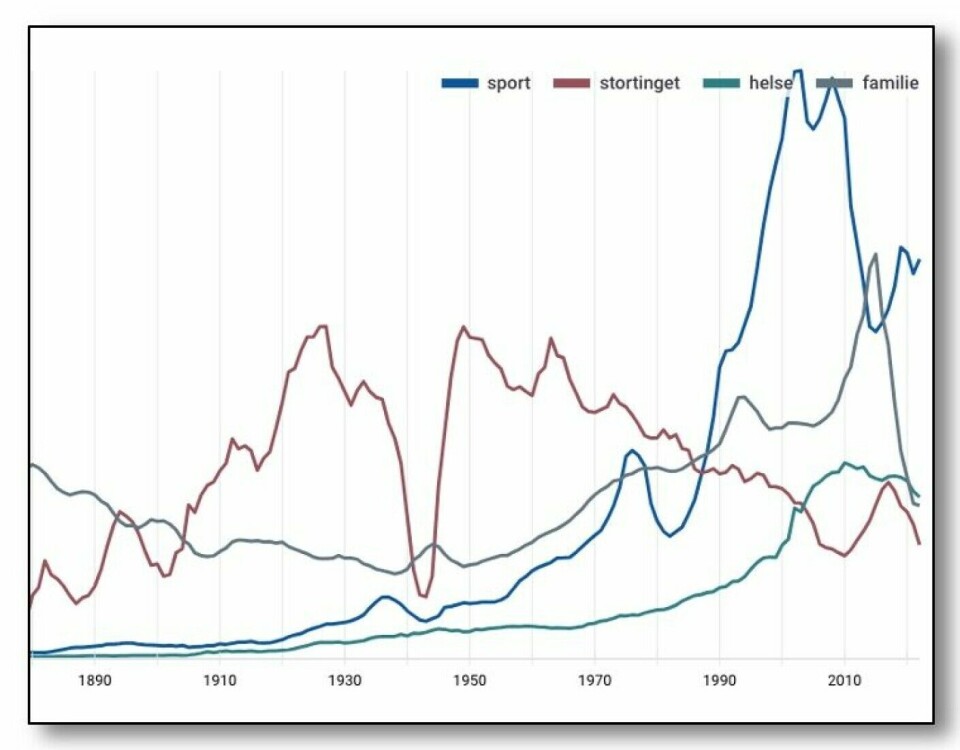
Sports: Newspapers threw themselves into sports news at the end of the 1980s. In the last decade, interest in sports appears to have declined a bit again.
Parliament: Throughout almost the entire last century, newspapers wrote extensively about Parliament. (The exception was the years under German occupation.) In recent decades, media interest in Parliament has decreased.
Health: The media now write about health issues much more than before.
Family: Family was important in newspapers in the 19th century. Then interest waned. But today, Norwegian newspapers write more about family than ever before.
“If we look at the development of the two institutions, the Church and Parliament, the decline in their coverage has developed almost in parallel. This has been the case since 1950,” says Stordalen.
Both the Church and Parliament are of decreasing interest to the media. Instead, the Bible and politicians have taken over.
“That’s also pretty interesting,” the researcher says.
Quite sensational
Professor Pål Ketil Botvar, who studies church and religion at the University of Agder, finds Stordalen's findings fascinating.
“This is quite sensational,” Botvar tells sciencenorway.no.
“ But for those of us who research this area, it's not entirely unfamiliar that the Bible continues to exist in society, independent of the Church of Norway and other denominations,” he says.
Botvar adds that the Bible is referred to all the time in film and theatre.
“If you take a closer look at films like the Harry Potter series and The Chronicles of Narnia, you'll find many references to the Bible,” he says.
People don't read the Bible anymore
Botvar also points out that fewer and fewer Bibles are being sold in Norway. The proportion of Norwegians who have a Bible at home is steadily decreasing.
“So there's nothing to indicate that people are reading the Bible more. Instead, it’s more about how references to the Bible are used in public discourse, in film, theatre, books, and other media,” he says.
Like Stordalen, Botvar at the University of Agder believes that Stordalen's findings primarily highlight the Bible as a cultural phenomenon.

“Many symbols from the Bible now live their own lives in our culture, detached from religion. The interesting question moving forward is what will happen now that social media plays such an important role in people's lives,” he says, and wonders:
“Will the use of the Bible continue in social media as well?”
Reference:
Stordalen, T. 'Biblical Narrative in a Century of Newspapers', Lecture during an honorary doctorate ceremony at Lund University, May 28, 2024.
———
Translated by Nancy Bazilchuk
Read the Norwegian version of this article on forskning.no






































